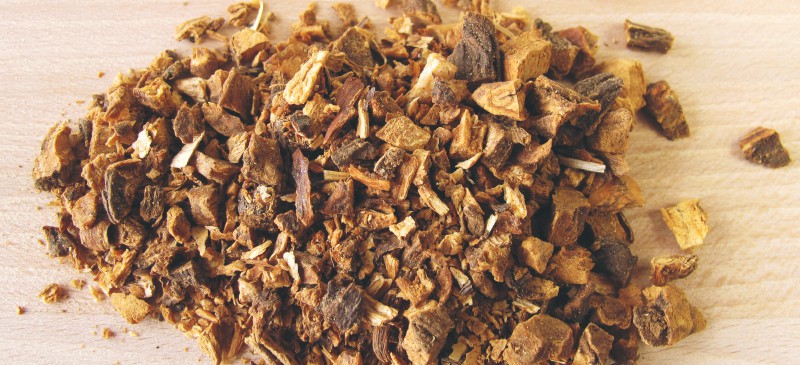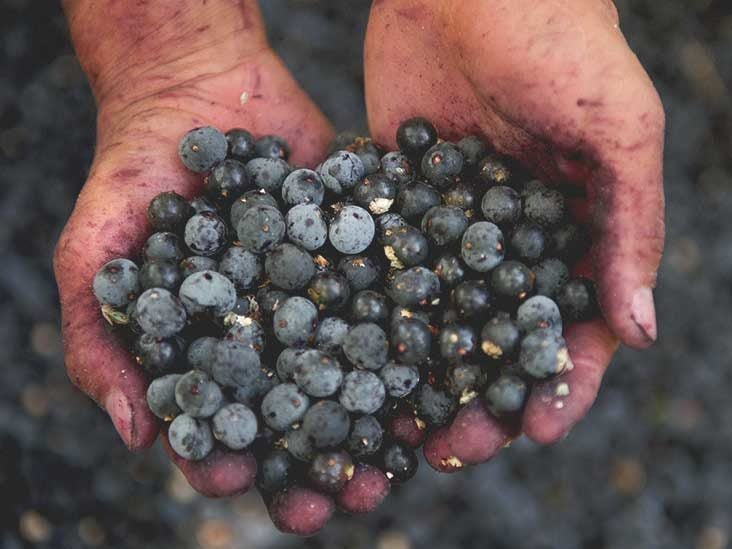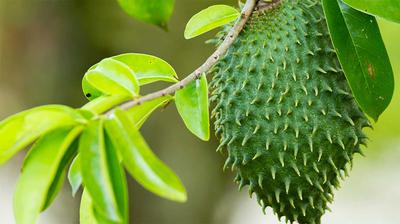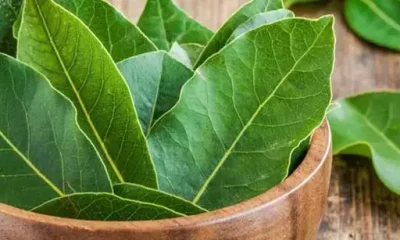Food
9 benefits of Gleditsia triacanthos or honey locust and side effects

Discover the 9 Shocking benefits of Gleditsia triacanthos or honey locust and side effects.
Gleditsia triacanthos, comes from Greek, and means with three thorns, due to its three-pointed spines.
It is located next to streams, roads, and paths; in parks and gardens, it is also used as the main species in forest safety belts throughout the world.
But these are only the best-known uses of the Gleditsia triacanthos tree.
In reality, there is a part of its history that deserves to be told, and that is that, behind its imposing size of about twenty to thirty meters in height and its thorny appearance, its medicinal role hides.
The fact is that, due to its properties, it can be used as a therapeutic and prophylactic agent in the care of digestive system problems.
But that’s not all, get ready to discover other benefits that the so-called black acacia offers.
Scientific name: Gleditsia triacanthos
Top ranking: Gleditsia
Category: Species
Species: G. triacanthos; L., Sp. Pl. 2: 1056, 1753
Family: Fabaceae
Subfamily: Caesalpinioideae
Health Benefits of Gleditsia triacanthos
Its chemical composition includes substances with physiological activity, such as alkaloids, flavonoids, tannins, saponins, anthraglycosides, vitamins K and C, present in its leaves, bark, flowers, and fruits.
All these components allow Gleditsia triacanthos to provide important services in favor of human health, such as those indicated below:
1. Ally of intestinal health.
In many places, it is used as a laxative and also to treat other conditions of the gastrointestinal tract.
2. It serves as an anesthetic.
Stenocarpine, which is used as a local anesthetic, is present in its branches and leaves.
3. To treat wounds and sore throats.
It is also argued that infusions of the bark of the black acacia are useful to heal wounds and some sore throats.
4. It works as an antispasmodic.
Its use has been suggested to prevent or interrupt intestinal smooth muscle spasms.
5. To reduce blood pressure.
Many scientists claim that it possesses the ability to dilate blood vessels, thereby lowering blood pressure.
6. Helps to improve intestinal problems.
From its active component atraglycosides found in the pericarp of the plant, it derives its laxative effects, which is why it is indicated for the treatment of chronic constipation.
7. It is used to treat dangerous diseases.
Substances that many believe are effective in treating very harmful diseases such as measles, whooping cough, and smallpox are extracted from the black acacia pods.
8. Effective to treat some skin damage.
Its external application, in the form of powder or ointment, is appreciated for the healing of ulcers and skin eruptions.
9. To treat throat problems.
From its bark and wood, an extract called black catechu is obtained, with which candies are made that are used as a remedy for pharyngitis and sore throats. They are claimed to be very effective.
Properties of the Gleditsia triacanthos
Has antispasmodic properties
Analgesic characteristics are attributed
It has anodyne virtues, that is, to calm pain
Is a psychotropic
Has anti-inflammatory attributes
It is used as a laxative
It is believed that it can be used as a contraceptive
It is considered an alkaloid
How to use Gleditsia triacanthos
Its seeds, bark, leaves, and flowers have been used for centuries to cure upset stomachs and other ailments. So, as you can see, practically the entire tree has medicinal properties.
However, as attractive as it is, never forgets the golden rule: before using drugs that are prepared based on Gleditsia, it is essential to first consult a qualified doctor.
On the other hand, the different forms of preparation for its use are infusions, powder, tinctures, and ointments. Each of them has its application depending on the diseases you want to attack. At this moment we will show you the different uses that it can be given:
In infusions. The most common way to use it is to treat digestive diseases such as diarrhea, gastritis, mucous colitis, and inflammation of the biliary tract, as well as hypertension and throat infections, and other conditions.
Powders and ointments. These are the pharmacy presentations indicated for the cure of skin problems.
Advantages and disadvantages of Gleditsia triacanthos
As has been seen, various medicinal applications have been found in their different parts. For example, the former Soviet pharmaceutical industry produced the drug triacetin, based on Gleditsia, for its antispasmodic effect by dilating blood vessels and lowering blood pressure.
Now it is convenient to learn its advantages and disadvantages.
Advantages of Gleditsia triacanthos
It is used to treat diarrhea and colitis
It is used for hypertension treatments
It is used to improve chronic constipation
It is believed to work to treat gallbladder inflammation
Used to lower blood pressure
Use topically to cure some skin conditions
Able to improve stomach spasms
Helpful for treating stomach ulcers
Disadvantages of Gleditsia triacanthos
It should be used with caution in people with low blood pressure.
Caution must be exercised, since, due to its component of saponins, if consumed in excess it can cause intoxication.
Some of its properties are still being studied, so its benefits are not yet fully understood.
Side effects of Gleditsia triacanthos or honey locust
It is impressive that this large thorny tree brings so many benefits. However, you have to take some steps in your job to just get profit without negative consequences.
The fact is that due to the triacanthine alkaloid it contains -which in large doses becomes a toxic agent for the organism- the medicines and infusions of Gleditsia triacanthos must be used with great care, as it could cause excessive paleness of the skin, nausea, vomiting, dizziness, diarrhea, and drowsiness.
Also, consider that not complying with the suggested doses of triacanthine-containing medications can lead to the destruction of red blood cells and create alterations in cerebral blood circulation.
All of this underscores the need to strictly adhere to medical instructions.
Related Searches…
Honey locust uses
Honey locust pods uses
Black locust vs honey locust
Honey locust pods edible
How to stop honey locust pods
Honey locust Habitat
Food
6 Benefits of sweet orange essential oil

Table of Contents
Food
5 Benefits of gentian root and side effects

Table of Contents
- Benefits of gentian root
- Gentian Nutrition Facts
- Side Effects of Gentian Root
- What is gentian?
- What can you use gentian for?
- Discover the 5 shocking health benefits of gentian root and side effects.
Gentian root (Gentiana lutea) is a bitter herb that has been used in traditional systems of medicine practiced throughout Europe for over two thousand years.
The benefits of gentian root besides working perfectly as a liver tonic and digestive aid also has a long history of use in Ayurveda and Traditional Chinese Medicine (TCM).
What is gentian root used for today? Many of the original applications of this herb remain, such as the treatment of indigestion, liver dysfunction, and fatigue.
Among its many active compounds are gentiopicroside and amelogenin, a characteristic bitter compound that binds to bitter taste receptors in the mouth.
Like other bitter herbs and foods, herbalists commonly use the taste and quality of gentian to support digestive health as it helps stimulate bile, increase the attractiveness of foods, and detoxify the liver, gallbladder, and liver. other organs.
Other gentian benefits include fighting inflammation, supporting the nervous system, increasing stamina, and aiding in heart health.
Benefits of gentian root
While it has been used safely and effectively for thousands of years, there are no human clinical studies involving this herb.
The FDA does not regulate the sales of this herb (or other herbal supplements), and few trials have been conducted to demonstrate its efficacy; That being said, there is a great deal of anecdotal evidence showing it has real uses and benefits.
1.- Helps improve digestive, liver, and gallbladder function
One of the most popular uses for this herb centuries ago and is still improving several facets of digestive health today.
Gentian herb has traditionally been used as a ‘gastric stimulant’ due to the effects it has on the excretion of saliva, bile, and enzymes, there is some evidence that it can stimulate the secretion of enzymes in the small intestine and increase gastric secretion, which facilitates the breakdown of food and the absorption of nutrients. Some of the purported benefits of gentian root for digestion include.
• Reducing loss of appetite
• Decreased nausea, heartburn, diarrhea, and general aches
• Improving saliva production by stimulating the membranes of the mouth and taste buds
• Helps with the production of gastric juices and bile secretion
• Support for liver and gallbladder functions
For centuries, gentian root has been known as a liver tonic and advocate for detoxification, as evidenced by its strong bitter taste.
Gout, jaundice, dyspepsia, and dysentery are some other conditions that are used to naturally treat treatment.
According to tradition, gentian taken with rhubarb is most effective in improving digestive symptoms, such as loss of appetite and nausea.
One study found giving patients 600 milligrams of gentian root a day helped relieve symptoms such as abdominal pain, nausea, heartburn, flatulence, constipation, loss of appetite, and vomiting.
To support the general health of the liver, it is recommended to use it in conjunction with other liver purifiers such as dandelion root.
Dandelion root is often powdered and roasted to use as a coffee substitute or added raw to herbal teas, both the root and leaves of the dandelion have been shown to protect the liver, reduce cholesterol, and triglycerides, fight bacteria and maintain eye health.
2.- Helps fight oxidative stress and chronic disease
Like other nutrient-dense herbs, gentian has antioxidant properties that help protect cells from free radical damage (also called oxidative stress).
Its active compounds (more on these below) are also beneficial in protecting against infection and reducing damage to the smaller arteries and blood vessels.
Gentian root beneficial compounds have anti-inflammatory effects that appear to benefit the cardiovascular, respiratory, and digestive systems.
For example, isovitexin has been a natural antiatherosclerotic agent that protects vascular smooth muscle tissue and increases cellular nitric oxide activity; This is beneficial for the prevention and treatment of arteriosclerosis or hardening/thickening of the arteries; it also has blood-pressure-lowering effects.
There is preliminary evidence that components, including secoiridoid, iridoid glycosides, gentiopicroside, xanthones, polyphenols, and flavone, may help defend against cancer due to their anti-inflammatory and anti-tumor effects.
3.- It can help reduce inflammation and pain
What are the benefits of gentian root if you have chronic pain? The active compounds found within this herb have been shown to fight inflammation and positively modulate pain pathways in the brain to decrease discomfort.
It can help reduce antibodies and autoimmune reactions that can lead to joint pain, fatigue, and weakness.
Gentian can also dilate blood vessels and help improve circulation, facilitating healing; This is why it is sometimes used to treat migraines, menstrual cramps, stomachaches, muscle spasms, and more.
Additionally, a compound in the gentian called erythrosine has been shown to have sedative and muscle relaxant effects, reducing spasms and cramps; Gentian root benefits can help reduce high blood pressure and lower heart rate in response to pain or stress.
4.- Helps treat wounds and infections (including sinus infections)
Gentian is applied to the skin to treat various types of wounds and fungal infections, it has been shown to kill harmful bacteria and improve blood flow to wounds or damaged tissues.
Several studies have found that it has antimicrobial and antifungal properties.
Gentian is combined with other immune-boosting herbs (including elderberry/elderflower, verbena, and sorrel) in a formula called Sinupret, which research studies have shown to help treat symptoms of sinus infection ( sinusitis).
The compounds in this herb can also help inhibit bacteria that can cause other infections; In addition to fighting bacteria, gentian has also been shown to help decrease fungal and yeast infections, such as those caused by Candida albicans.
5.- Supports the Nervous System
The benefits of gentian root seem to support the central nervous system by helping to relax muscle tension and act as a natural sedative, but at the same time, it also helps fight fatigue.
In animal studies, the secoiridoid compounds found in gentian, such as gentiopicroside, swertiamarine, and sweroside, have been shown to increase endurance and decrease muscle fatigue.
Another herb that gentian can be used in combination with the nervous system is the adaptogen called licorice root, which has been used for centuries to treat fatigue, stress-related symptoms, coughs and colds, gastrointestinal problems, and reproductive problems.
Licorice root can help gentian to be more effective. It is often used in Chinese medicine as a “guide medicine,” helping to improve other herbs and remedies to make them more beneficial.
Gentian Nutrition Facts
An analysis found that the most active components found within gentian root benefits include:
• Gentiopicroside (the most dominant compound)
• Loganic Acid
• Swertiamarin
• Other xanthone glycosides, including gentisin, isogentisine, amelogenin, and gentiopicrin
Gentiopicroside, one of the most extensively investigated Secoiridoid compounds isolated from Gentiana lutea, has been shown to have benefits in animals, such as fighting inflammation and reducing pain; it is believed to have analgesic effects due to the way it affects pain-induced synaptic pathways in the brain; it also has anti-inflammatory, hepatoprotective and antiparasitic effects.
Additionally, certain studies have found gentianine to have antidiabetic, anti-inflammatory, antipyretic, sedative-hypnotic, and diuretic effects.
Amarogentine is a compound found in this herb that contributes to its bitter taste. Like other bitter herbs and foods (such as coffee or dandelion root), it has a strong gastric effect by stimulating the production of digestive fluids.
Isogentisine is another compound that has been associated with the prevention of endothelial injuries, such as smoking.
In one study, when 22 natural alpine plant extracts were tested for their potential to protect human vascular endothelial cells from cigarette smoke-induced cell damage, Gentiana lutea extracts were shown to be the most effective; Research suggests that isogentisine promotes cell survival by activating cell repair functions.
Side Effects of Gentian Root
Gentian root can sometimes be irritating to the digestive system in people with gastrointestinal conditions, including ulcers.
Taking the root can also lower blood pressure and affect blood sugar (glucose), which can lead to weakness and fainting, so it is recommended to speak with a doctor first if you take medications to control blood and blood pressure.
This herb is generally considered safe, however, cases of gentian poisoning have been reported when people have used the herb to make their wines/spirits and tonics.
Possible side effects that may occur include stomach irritation, nausea, vomiting, diarrhea, headache, skin irritation, and increased acidity in the stomach.
If you experience gentian side effects, stop using the product immediately and speak to a doctor if you don’t feel better in a day or two.
What is gentian used for in traditional medicine systems?
In traditional Chinese medicine (TCM), the gentian root is called Long Dan Cao. Its most common use is to treat liver-related diseases and support detoxification; It is one of the three main natural flowers of China (the other two are azaleas and primulas); he sees it as a cold and bitter scent (which removes heat and moisture), which helps the liver and gallbladder.
Some of the main uses of gentian in TCM include treating jaundice, vaginal swelling and itching, vaginal discharge, persistent erection, itching due to eczema, red eyes, deafness, and hypochondriacal pain.
In TCM, it is commonly taken with other healing herbs; it also helps reduce inflammation, provides relief from spasms, stimulates blood flow in the digestive and pelvic region, promotes menstruation, and helps eliminate headaches, fatigue, and fever; It can be found in the form of tea, liquid extract, tincture, capsule, or raw root extract.
It can be used to make tonics in combination with gentian, valerian root, and passionflower.
Gentian “medicine” is also revered in Ayurveda, as are many other bitter herbs; It is considered to be a “cleanser” due to its very bitter taste, it helps cleanse the liver and stimulates digestive secretions.
It is also used for its anti-inflammatory effects and as a natural remedy for the treatment of sinus infections; often substitutes bitter gentian for other comparable bitters, such as chiretta or kutki.
These bitter herbs are said to cleanse the mind and prepare the body for eating; Ayurvedic practitioners generally recommend consuming between one and two grams per meal and paying attention to the bitter taste for the best effects.
What is gentian?
It is a bitter herb from the Gentianaceae plant family that is native to the Alpine and Himalayan mountain regions.
It has a long history of use in medicinal herbs, especially to treat stomach ailments, liver disease, and aid with digestion. Today, it is most widely grown in Europe, China, and parts of North America.
What does the name gentian mean?
The herb is said to be named after the Illyrian king named Gentius (lily was a region in the western part of the Balkan Peninsula that was conquered by the Romans around 160 BC). Records show that Gentius was one of the first to discover the medicinal properties of the plant and use it to create healing tonics.
There are more than 400 different species in the Gentianaceae family, and at least several species in the Gentiana genus are used in herbal medicine, including Gentiana lutea, Gentiana manshurica Kitag, Gentiana scabra Bunge, Gentiana triflora pall, and Gentiana iridescent Franch.
There are also many alternative names to which gentian is sold based on the specific formula and genus, including yellow gentian, Chinese gentian root, gentian root, bitter root, pale gentian, felwort, and radix gentian are.
What can you use gentian for?
Historically, it has been used to treat:
• Hepatic injury
• Stomach and digestive problems, such as loss of appetite, diarrhea, gas, bloating, heartburn, and nausea
• Migraines
• Sinus infections
• Period pains
• Chronic fatigue and weakness
• Scalp eczema
• High blood pressure
• Parasites
• Psoriasis
• Hair loss
• Jaundice
• Gout
• Hepatitis
• Candida
• Food allergies and intolerances
• Poor child growth and development
Where to buy gentian root:
• Gentian root is used to make concentrated (bitters) extracts, teas, tonics, liqueurs, powders, capsules, and tinctures. It is most commonly taken in capsule form, but it is also used in herbal teas and as an alcoholic extract called Angostura bitters.
• The part of the plant that is normally used medicinally is the dried, mature root of the plant. Some supplements, teas, and tonics may also include other parts of the herb, such as the stem or leaves.
• Gentian supplements are available at some health food stores, online, and by working with a trained herbalist.
• Always read product labels carefully and look for a reputable supplement brand that lists active ingredients on the label. The most widely available type of gentian supplement is the root of the species Gentiana lutea.
• To increase digestion and liver health, look for combination products that include gentian in addition to other beneficial herbs, such as licorice root or rhubarb extract.
How to use gentian:
• Take it about 20 minutes before each meal to help with digestion.
• While it’s likely to be used safely for several months, most herbalists recommend taking this herb for about two to three weeks at a time before taking a break (especially if you’re taking high doses).
• If you are making your formula, you need to clean, dry, and root (or buy dry powder) first. Be very careful not to use the highly toxic white hellebore, which can be misidentified as gentian and be poisonous
Food
12 Benefits of acai berry and side effects

Table of Contents
- What are acai berries?
- Health benefits of acai berry
- 1. Acai berries have great antioxidant power
- 2. Benefits of acai berry for heart
- 3. Anti-proliferative virtues
- 4. Benefits of acai berry for skin!
- 5. Benefits of acai berry for digestion
- 6. They reduce lung irritation
- 6. Acai improves the overall health of your body cells
- 7. Benefits for the entire immune system
- 8. Anti-aging Virtues
- 9. Acai berries increase the amount of energy
- 10. Benefits On Libido
- 11. Improves Cognitive Functions
- Discover the 12 amazing health benefits of acai berry and side effects.
Many berries are healthy and should be included in our diet more often. Most are loaded with antioxidants and vitamins. This is particularly the case with acai berries.
benefits, virtues, shape, health, vitamin, antioxidant- What are acai berries?
- Health benefits of acai berry
- 1. Acai berries have great antioxidant power
- 2. Benefits of acai berry for heart
- 3. Anti-proliferative virtues
- 4. Benefits of acai berry for skin!
- 5. Benefits of acai berry for digestion
- 6. They reduce lung irritation
- 6. Acai improves the overall health of your body cells
- 7. Benefits for the entire immune system
- 8. Anti-aging Virtues
- 9. Acai berries increase the amount of energy
- 10. Benefits On Libido
- 11. Improves Cognitive Functions
What are acai berries?
Acai berries (Euterpe oleracea) are extracted from a palm tree native to South America. Their use was restricted until recently due to their difficulty of access. Indeed, they were found almost only in the Amazonian swamps.
Acai berries, like other berries (blueberry, gogi berry, cranberry, raspberry), have some benefits for the body due to their high content of antioxidants, natural vitamins C and minerals. People who want to get back in shape, to regain tone or to cleanse their immune system often use them.
Health benefits of acai berry
1. Acai berries have great antioxidant power
This is the greatest asset of these Amazonian berries and many of its benefits and virtues derive from this powerful power.
Acai berries have an immense antioxidant effect due (among other things) to the presence of manganese and polyphenols. These two components help inhibit free radicals: molecules that oxidize cells in the human body.
By fighting against oxidation in the body, acai berry helps in the fight against certain cancers, cataracts, arthritis and other degenerative diseases.
2. Benefits of acai berry for heart
As with red wine, research shows acai berries to be extremely high in anthocyanins, an antioxidant that helps balance cholesterol.
Acai is also rich in plant sterols, which offers cardioprotective benefits like better blood circulation, better blood composition as well as greater dilation of blood vessels.
3. Anti-proliferative virtues
Studies have shown the anti-proliferative benefits of acai, especially at the time of proliferation of leukaemia cells in the body.
4. Benefits of acai berry for skin!
Acai oil is a great natural alternative to chemicals. Currently, many beauty products contain acai oil due to its high content of antioxidants, vitamins and minerals.
When ingested or applied, the berries nourish the skin and give it a healthy glow. Brazilian women know this benefit very well and have eaten acai berry for centuries to promote healthy skin.
5. Benefits of acai berry for digestion
Acai can also help maintain a healthy digestive system. These berries have powerful detoxification abilities and are an important source of dietary fibre for the body.
The fibres make it possible to fluidify food transit and are used in particular to fight against constipation. Of course, many other foods rich in it have the same effect, including other types of berries and fruits.
6. They reduce lung irritation
Like blackberries, raspberries or grapes, acai berries can prevent lung irritation and respiratory distress. This virtue is mainly due to the berries’ high content of antioxidants.
6. Acai improves the overall health of your body cells
Generally speaking, the anthocyanins found in acai berries play a role in the body’s cellular protection system. They participate in the conservation of the strength and vitality of cells and fight effectively against the invasion of free radicals and oxidation of the body.
Besides, the high content of vitamins and minerals in acai contributes to the proper functioning of the cells of the body.
7. Benefits for the entire immune system
A study found that the polyphenolic compounds extracted from acai reduced the proliferation of dysfunctional cells in the human body by up to 86%.
The acai berry is believed to contain phytochemicals that can disrupt cell mutation at the molecular level, killing affected cells before they multiply. Which would add a string to its bow when it comes to the fight against cancer. While there is nothing to say that acai berries can cure these kinds of ailments yet, hopes are turned to research.
What is certain today is that the acai berry contributes to the good shape of your immune system.
8. Anti-aging Virtues
With extremely high content in many phytochemicals, acai berry can slow down or reverse oxidation damage that causes ageing processes in the skin and the body in general.
Acai berries are one of the best sources of antioxidants; a berry has ten times more antioxidants than a grape and twice as much as a blueberry.
The consumption of acai berries can therefore generate better skin health, but also articulatory, muscular and organic.
From the point of view of the organs, we think in particular of the brain, which would age more healthily. Antioxidants, vitamins and minerals each still play their part in this action.
9. Acai berries increase the amount of energy
Due to its health benefits (including its antioxidant benefit), consuming acai can lead to an increase in overall energy and stamina levels, and can help fight fatigue and exhaustion.
This virtue is mainly due to the benefits of antioxidants which relieve the body of the painful struggle against free radicals.
Because as long as the body must mobilize its forces to fight against them, it cannot use them for other tasks and it is the other functions of the body that suffer. Fatigue and stress, for example, result.
10. Benefits On Libido
The acai berry plays a direct role in the blood circulation in the human body, which helps to stimulate libido and in particular to facilitate and strengthen erections in men.
11. Improves Cognitive Functions
Preliminary studies show that acai can improve cognition and promote healthy ageing of the brain. More studies are needed to confirm these benefits, but this is already a good start.
BEFORE YOU BUY ACAI BERRY
Be careful to choose berries certified as fertilizer and pesticide-free. Not only will they contain more minerals, vitamins and antioxidants, they will also taste better.
If you can’t find acai berries, goji berries are also known to have a high (albeit lower) antioxidant concentration.
We hope the article on the 12 amazing health benefits of acai berry has been helpful.
-

 Benefits4 months ago
Benefits4 months agoThe Benefits of Joining Gym Lumolog – Improve Your Fitness & Health
-

 Food1 year ago
Food1 year ago10 + Benefits of carrot juice and side effects
-

 Health1 year ago
Health1 year ago50 Super Healthy (And Very Often Cheap) Foods
-

 Health1 year ago
Health1 year ago5 Shocking health benefits of kinkeliba and side effects
-

 Food1 year ago
Food1 year ago8 shocking benefits of leek juice and side effects
-

 Health1 year ago
Health1 year ago15 health benefits of soursop leaves tea and side effects
-

 Health1 year ago
Health1 year ago15 Benefits of lipton tea and side effects
-

 Health1 year ago
Health1 year agoBenefits of guava leaves Sensually












